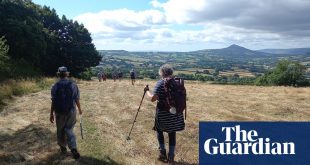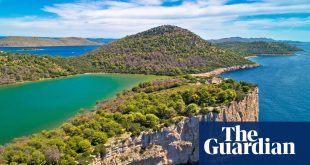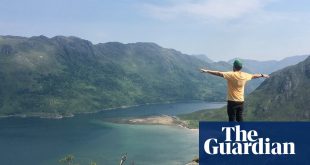When hydroelectric power first arrived in Switzerland’s Bavona valley in the 1950s, residents of its 12 hamlets gathered for a vote. Should they connect their valley – one of the steepest and wildest in the Alps – to the grid, or should they shun the trappings of the modern world?
Surprisingly, 11 of the 12 towns chose to reject electricity. That’s why on a sunny October day, as I walk the seven-mile path connecting Cavergno, in the south, with San Carlo, in the north, I see no wires, poles or antennas. It feels as if I’ve stepped back in time to a simpler era.
Switzerland is, according to the Human Development Index, the most “developed” country in the world. So, it defies all expectations to find a place like the Bavona valley, 18 miles north-west of Locarno in Switzerland’s Mediterranean-like (and Italian-speaking) canton of Ticino.
“This is a such a unique place because we’ve been lucky enough to keep it almost as it was in the past few centuries without the effects of technology and modernism,” says Rachele Gadea Martini, who joins me for my walk. Martini is the coordinator of the Fondazione Valle Bavona, set up in 1990 to regulate building codes and preserve the valley’s heritage (visitor information is available at the Fondazione’s office in Cavergno and the trail is easy to follow, with lots of signage and a clear path).
Martini says that not only did the road built for the hydroelectric plant threaten to put an end to subsistence farming here, it also (quite literally) paved the way for new materials like bricks and metals to enter the valley for repairing its venerable grey-stone cottages. Fearing Bavona would lose its identity, conservationists jumped to action. By 1985, they had set in place a regulatory plan, laying the groundwork for the foundation five years later.
As a result, this stretch of the path, between Mondada and Fontana, looks much as it has for centuries, surrounded by terraced chestnut groves. Martini shows me Mondada’s grá, a two-level stone structure used to fire-dry chestnuts, which are later peeled, sorted and ground in a mill for flour to make unleavened (and slightly sweet) fiascia bread, a valley staple each autumn. She says that, until the arrival of crops such as potatoes, the chestnuts were really “a tree of life here.”
The name for a traditional Bavona valley home is a rustico. Made of stacked stones (often without mortar), they were often built three storeys high to conserve heat and save land. Some date from the 15th century, and have been passed down through generations (rustici rarely go on sale). Nearly all modern owners use them seasonally, between May and October. Martini says just five people live here year-round.
Up above, as we walk, the Alps rise to 2,500 metres. They form near-vertical cliffs on either side of the Bavona River, whose historic floods caused frequent tragedies here. Because of the lack of flat farmland, residents practised the age-old tradition of transhumance, moving goats and cows from one grazing ground to another (typically further up the mountains) throughout a seasonal cycle. This has left the hills carved with paths that modern-day hikers revere.
“The valley is kept alive because people love their land and take care of it,” Martini says as we walk to Fontana for lunch. “That love is passed on to descendants.”
Of course, living without electricity does pose its challenges, says Renato Pedroni, who runs restaurant Grotto di Balöi in Fontana (closed in winter). It’s pergola-covered patio overflows with grapes.
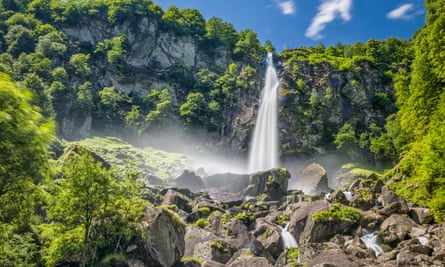
“One big advantage of being in the valley is that the sunlight is limited to a few hours a day which, alongside the elevation and mountain winds, makes it a relatively agreeable and cool place,” he says as Martini and I dine on plates of cheese gnocchi in a butter and sage sauce, the local speciality. “We manage to keep a very cool cellar, which helps us to store all those goods that need cool temperatures.”
The restaurant does use solar panels to power a freezer and refrigerator, and buys gas for the stove. Many residents, I learn, do the same.
after newsletter promotion
“Of course, there are those who would like electricity for practicality’s sake,” says Martini as we wash down our meal with glasses of Ticino’s floral white merlot. “But most make do, supplementing with solar panels or gas cylinders. The prevailing view is to make do with what there is and live in a simpler way.”
The village of Foroglio is famous for an 80-metre waterfall that roars out of the mountains, dropping behind its 15th-century church. Tight laneways lead from here to surrounding rustici. Moving deeper into the valley toward San Carlo (the sole village that did opt for electricity), I marvel at the ingenuity of early residents and the ways they manipulated an unforgiving environment.
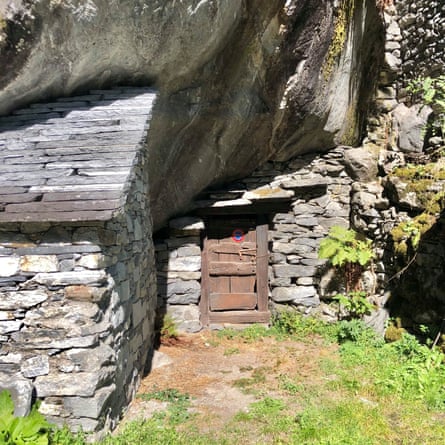
Huge earth-covered boulders called balòi were often used to create raised gardens of rye, millet and potatoes. Other balòi were dug out from the base to craft rock shelters called splüi, for housing animals or storing provisions. Some of these lie abandoned, but others are still in use.
Hikes like mine through the Bavona valley can be done as a day trip from the cities of Locarno and Lugano, though there are hotels in the gateway town of Bignasco (such as Albergo Posta) or at the top of San Carlo’s cable car (Albergo Robiei) in the alpine hamlet of Robiei.
Staying in the valley itself typically involves renting a charming rustico through, say, Airbnb – though the foundation tries to ensure these are kept to a minimum. After all, its goal is to prevent the valley from turning into a living museum. “What we want,” Martini says, “is for this place to feel alive.”
The trip was provided by Ascona-Locarno Tourism
 Top Naija News – daily news updates in Nigeria | breaking news naija Welcome to Top Naija News, your ultimate destination for daily news updates in Nigeria. We are a dedicated news curation blog from various sources.
Top Naija News – daily news updates in Nigeria | breaking news naija Welcome to Top Naija News, your ultimate destination for daily news updates in Nigeria. We are a dedicated news curation blog from various sources.
